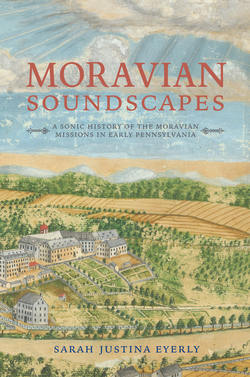Читать книгу Moravian Soundscapes - Sarah Justina Eyerly - Страница 11
ОглавлениеNOTE ON NAMING, TERMINOLOGY, AND ARCHIVAL SOURCES
Naming and Terminology
Native, Native American, Native Moravian: Tribal names have been used whenever possible in this book and on the companion website, or “Native” when referring to individuals or groups of multiple tribal heritages. Due to the particular pressures of colonization, the Moravian missions were home to people from various geographic locations and tribal affiliations. Therefore, I have also adopted the term “Native Moravian” to refer broadly to Indigenous people who affiliated with the Moravian Church.
European, European Moravian: I have chosen to use the terms “European” or “European Moravian” in recognition of the fact that the Moravian missions, and also Pennsylvania in general, were home to people from various parts of continental Europe and Britain. Since this study involves multiple ethnic groups, I have used terms such as English Moravian or German Moravian only where it applies to particular people or groups.
Moravian Church: In the eighteenth century, the Moravian Church had many names: Unitas Fratrum, Brüdergemeine, Ancient Unity, erneuerte Brüdergemeine, Herrnhuter, and the Brethren’s Congregation, among others. For the purposes of this study, I have adopted the common English language name, Moravian. It is also important to note that the term “Moravian” was a spiritual designation in the eighteenth century, and did not denote a particular race, class, or geographic origin.
Pennsylvania or Penn’s Woods: There is not a single Native word for the region of North America that would become the colony of Pennsylvania in the seventeenth century, so indigenous toponyms have been used when possible for local geographies, and the process of naming is discussed throughout the book and in the accompanying maps as a feature of colonization and decolonization.
Archival Sources
Primary source materials from the Moravian Archives in Bethlehem, Pennsylvania, and the Unity Archives of the Moravian Church in Herrnhut, Germany, are the backbone of this study. It is my intention to present these sources as authentically as possible. Quotes preserve the original spelling, errors, and eighteenth-century conventions. I have avoided “sic,” due to the sheer number of anomalies deemed incorrect by modern English or German standards. For instance, the written form of German permitted capitalization of the first two letters of words such as HErrn or JEsu, or capitalization of entire words, to add emphasis. All translations were prepared specifically for this study, unless attribution is given.
All pictures and photographs of archival materials are printed with permission from the Unity Archives of the Moravian Church, Herrnhut, Germany; the Moravian Archives, Bethlehem, PA; the Moravian Historical Society, Nazareth, PA; and the Historical Society of Pennsylvania. The abbreviation “UA” refers to the Unity Archives of the Moravian Church in Herrnhut; “MAB” refers to the Moravian Archives in Bethlehem. The conclusions of this study apply principally to the American communities of the Moravian Church. For the purposes of this study, I did not review archival records from mission communities outside of North America and Germany.
Additionally, I have sometimes used newer versions of spelling and orthography for the Mohican language, where these differ from Moravian missionary transcriptions, according to current language revival guidelines being adopted by a descendant community on the Stockbridge–Munsee Reservation in Wisconsin.
